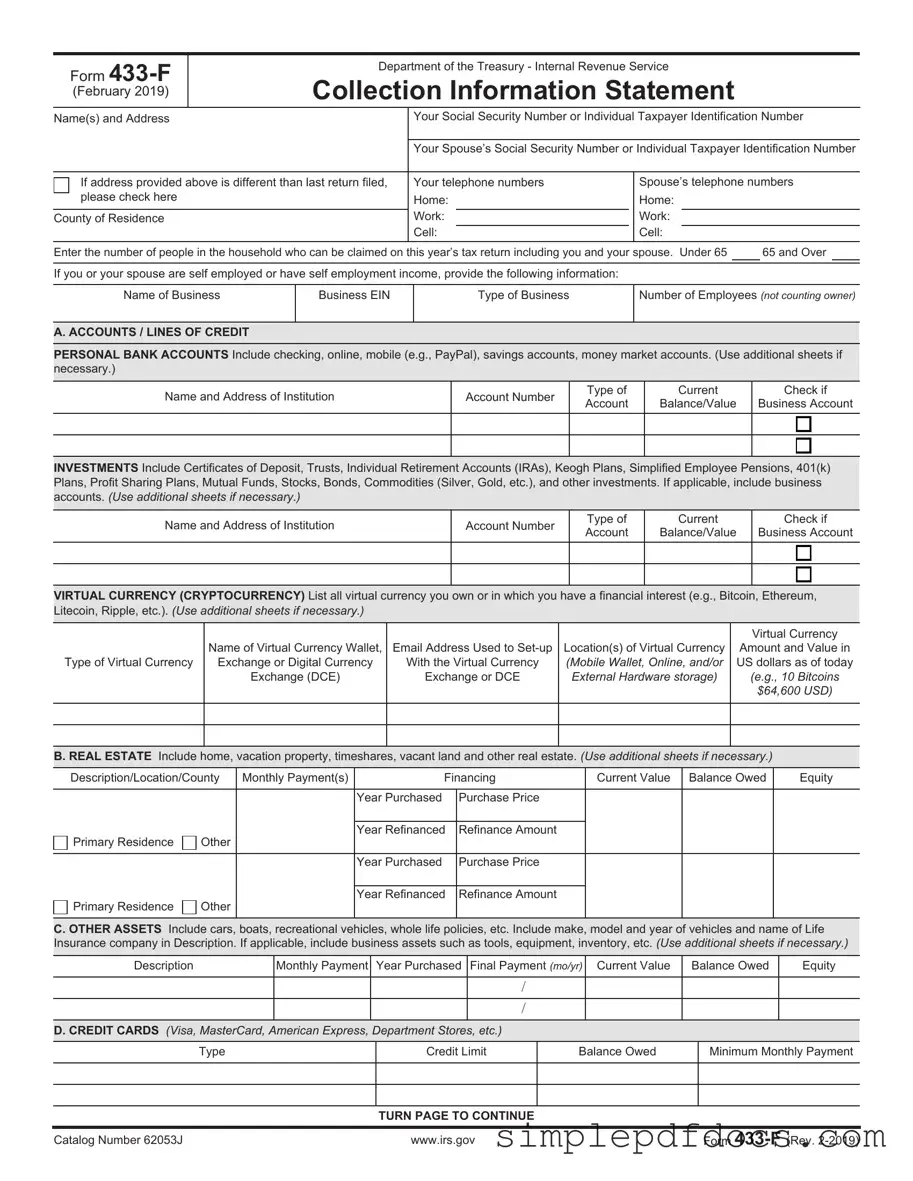The IRS 433-F form plays a critical role in the process of tax collection and financial assessment for individuals and businesses facing tax liabilities. This form is primarily used by the Internal Revenue Service to gather essential information about a taxpayer's financial situation, including income, expenses, assets, and liabilities. By providing a comprehensive overview of one's financial standing, the 433-F enables the IRS to evaluate the taxpayer's ability to pay their tax debts. This assessment can lead to various outcomes, such as establishing payment plans, negotiating settlements, or determining eligibility for other tax relief options. Understanding the nuances of the 433-F form is vital for taxpayers who find themselves in financial distress, as it can significantly influence the resolution of their tax obligations. Completing the form accurately and thoroughly is essential, as it directly impacts the IRS's decision-making process regarding payment arrangements or potential penalties. As tax situations can be complex and stressful, familiarity with the 433-F form can empower individuals and businesses to navigate their financial responsibilities more effectively.
